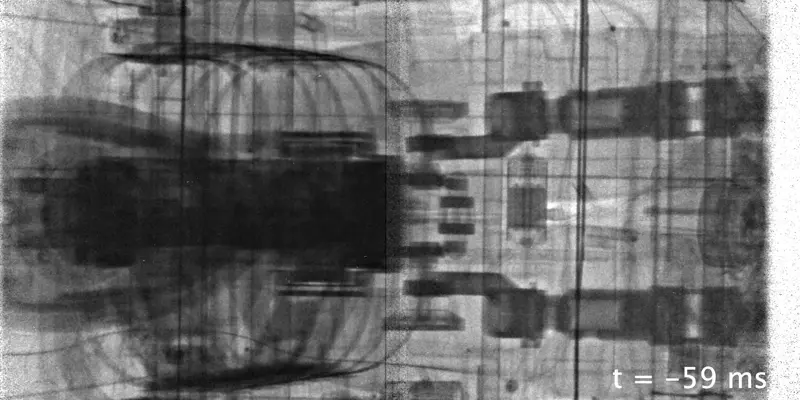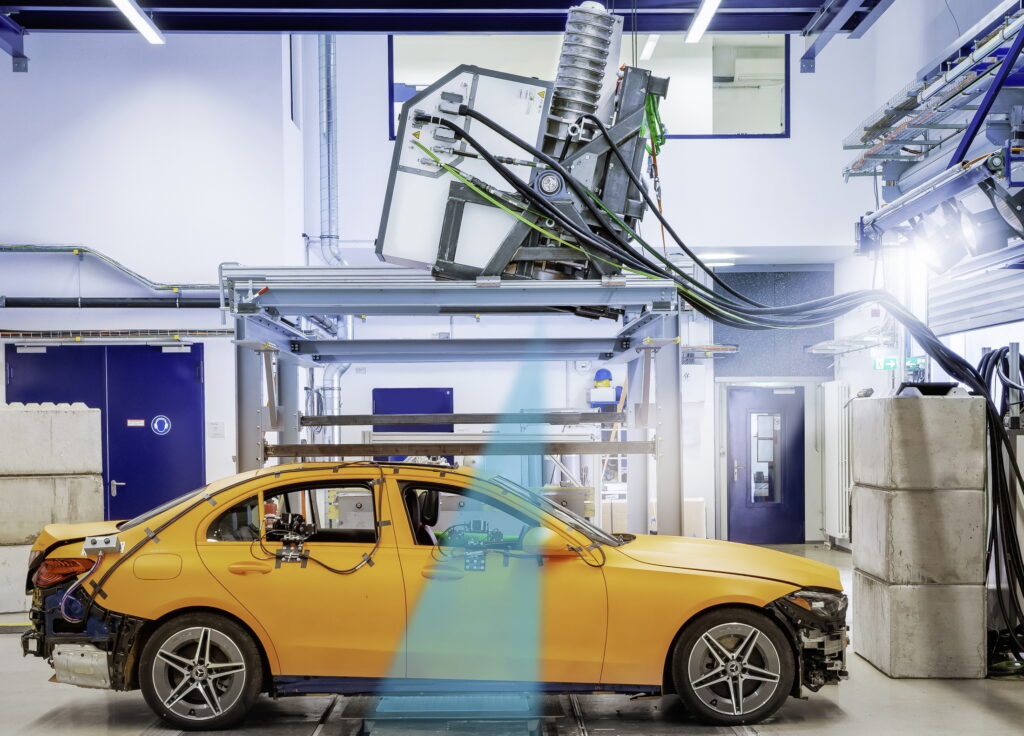By seeing inside a car as it’s being destroyed, Mercedes says it can gain a lot of insight about safety and quality
4 hours ago
 –>
–> 
–>
Crash tests have improved a lot over the years, but the engineering folks over at Mercedes-Benz hope their latest innovation will help it make the next leap forward in vehicle safety. The automaker has become the first to successfully shoot an X-ray of a crash test.
Mercedes says it has been working on this technology for years, but that recording clear images of a crash test has proven difficult. The average exposure time for a standard X-ray is around a second, and a lot happens in that amount of time during a car crash, leading to blurry, useless images.
To speed the process up, Mercedes worked with Fraunhofer-Institute for High-Speed Dynamics and the Ernst Mach Institute in Freiburg, and together they developed a camera that can shoot up to 1,000 images per second. That allows researchers to create slo-mo X-ray videos of a crash.
Read: Mercedes Crashes Two EVs Into Each Other To Prove They’re Safe In The Real World

“The world’s first X-ray crash shows that X-ray technology can provide revealing new insights. We learn what happens inside a vehicle and to the dummies during an accident,” said Dr. Paul Dick, Mercedes’ director of vehicle safety. “The X-ray images also offer the opportunity to further improve the model quality of the digital prototypes.”
The breakthrough that allowed Mercedes shoot this impressive video was the use of a powerful radiation source. The automaker says that its 1 kHz linear accelerator has up to nine megaelectrons volts of photon energy and can shoot X-ray pulses that last just a few microseconds.
The energy passes through the vehicle to a flat detector on the ground, under the vehicle. It serves as a digital image receiver, and each pixel becomes more or less gray depending on how much radiation passes through the vehicle, creating an image that can be used by safety researchers.
Surrounded by 15-inch thick concrete walls
To ensure that those researchers don’t get a dose of radiation, the crash test facility is surrounded by 40-centimeter-thick (15-inch) concrete walls, and a 45-tonne door. However, Mercedes claims that the radiation doesn’t bother its other analysis tools, meaning that it can gather all the information it would in a non-X-ray crash test while shooting this video.
In the footage you’re seeing here, the automaker says it was running a side-impact crash test. The images help visualize the internal deformations occurring inside the vehicle and the dummy, that might not have been apparent previously.
“The Mercedes-Benz X-ray crash sets a milestone in the development tools of the future,” said Markus Schaefer, Mercedes’ chief technology officer. “With a direct view into the hidden interior, it can help to draw important conclusions for the further improvement of vehicle safety. Mercedes-Benz thus confirms its role as a safety pioneer in automotive engineering.”

